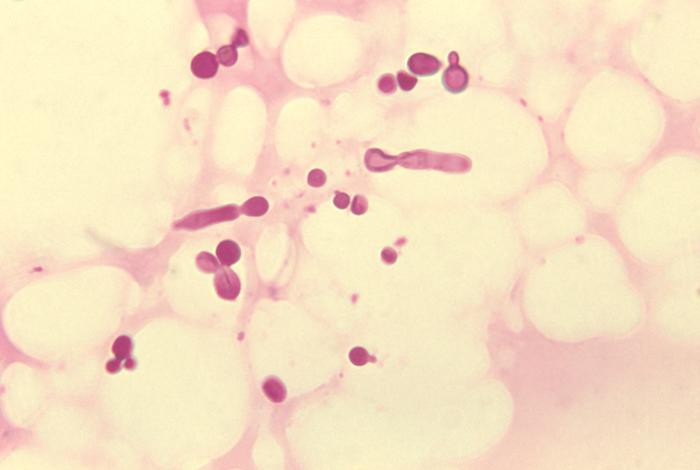The skin, acting as the body’s primary defense, hosts a diverse microbial community, with the fungal genus Malassezia being a significant component. While often a commensal, excessive growth or metabolic dysregulation of Malassezia, a lipid-dependent yeast, is strongly associated with the development of various skin disorders, including pityriasis versicolor, Malassezia folliculitis, seborrheic dermatitis/dandruff, atopic dermatitis, and psoriasis. Given this intimate connection to skin health and disease, understanding the interplay between Malassezia and cutaneous lipid metabolism is crucial. This review article addresses the critical issue of how Malassezia disrupts skin lipid metabolism and subsequently impairs the skin barrier function, thereby providing a foundation for considering the regulation of skin lipid metabolism as a potential therapeutic avenue for these dermatological conditions. By elucidating these mechanisms, the study offers insights into developing innovative treatments targeting the root causes of Malassezia-related skin diseases.
Key Findings
•Malassezia is a major fungal constituent of the skin microbiome, representing a significant percentage in healthy individuals and associated with several lipid-dependent skin diseases.
•As a lipophilic and lipid-dependent yeast, Malassezia requires host sebum as a nutrient source due to its inability to synthesize certain fatty acids. It secretes various lipases that hydrolyze sebum triglycerides into free fatty acids.
•This lipolytic activity alters the sebum composition, preferentially consuming saturated fatty acids and leaving unsaturated ones, which can disrupt the skin’s acid-base balance and contribute to inflammation and oxidative stress.
•The interaction between Malassezia and sebaceous glands involves a positive feedback loop: Malassezia’s lipases generate free fatty acids, which can stimulate sebaceous glands to produce more sebum, further fueling fungal growth.
•Malassezia metabolites can activate signaling pathways (e.g., NF-κB) in sebaceous gland cells, alter the sebaceous gland microenvironment to favor fungal proliferation, and induce oxidative stress, all impacting sebum production and potentially leading to skin issues.
•The free fatty acids produced by Malassezia disrupt the skin lipid barrier by affecting pH, stratum corneum integrity, and the ceramide/cholesterol ratio, leading to clinical manifestations like microbial colonization, transepidermal water loss, xerosis, desquamation, erythema, and pruritus.
•The skin attempts to combat Malassezia by maintaining lipid barrier integrity and regulating sebum secretion, thereby limiting the availability of saturated fatty acids and inhibiting lipase activity.
•Current and prospective treatments for Malassezia-related skin diseases aim to disrupt pathogenic cycles by targeting lipid synthesis, breakdown, and transport processes through various means, including topical medications, laser/radiofrequency, plant-based ingredients, and biological therapies.
This study provides a comprehensive overview of the intricate relationship between Malassezia and skin lipid metabolism, highlighting the crucial role of this interaction in the pathogenesis of various skin disorders. The novelty of this study lies in its integrated presentation of the ecological context of Malassezia, its specific mechanisms of lipid disruption, and the direct consequences on the skin barrier function. By consolidating these findings, the review underscores the potential of targeting skin lipid metabolism as a therapeutic strategy for Malassezia-related diseases. Future research should focus on developing novel drugs and therapeutic approaches that precisely modulate skin lipid metabolism to inhibit Malassezia overgrowth, restore the skin’s protective barrier, and dampen inflammatory responses. This direction holds significant promise for improving clinical outcomes and offering new therapeutic avenues for prevalent conditions like seborrheic dermatitis.
Link to the study: https://www.mdpi.com/2079-9284/12/2/67

